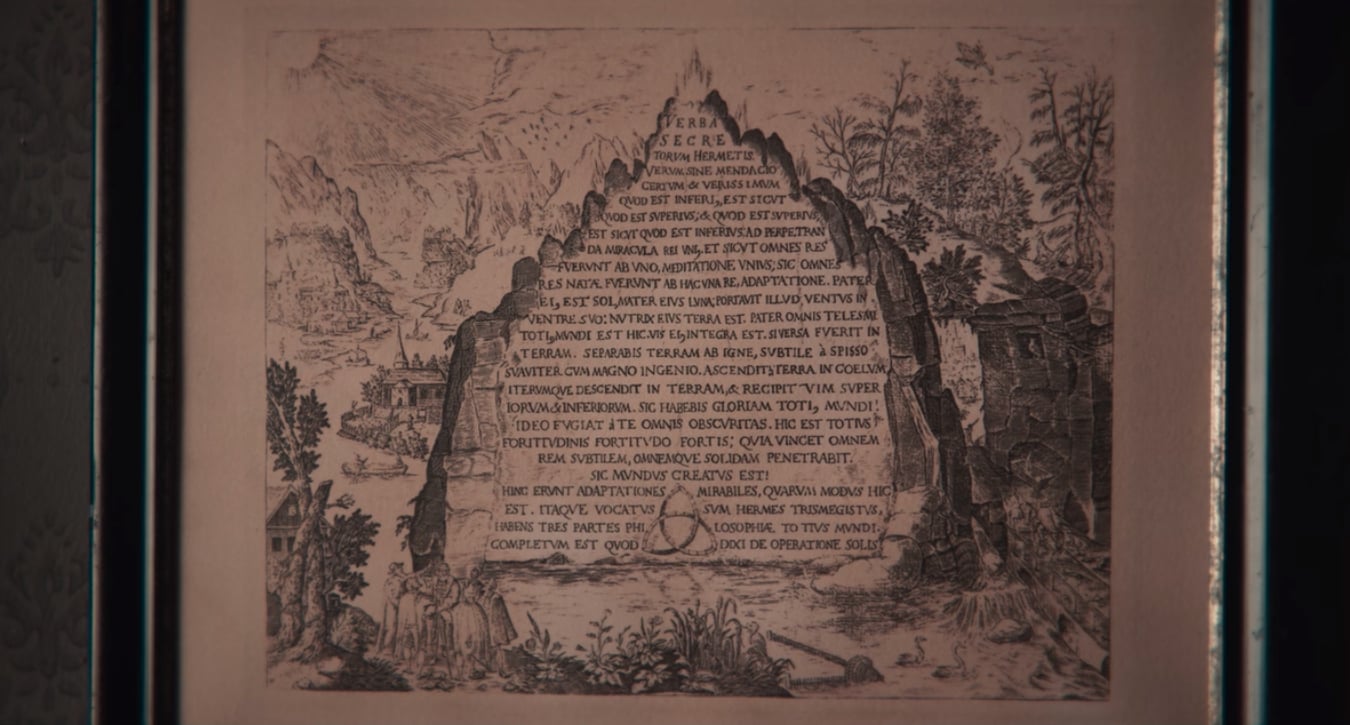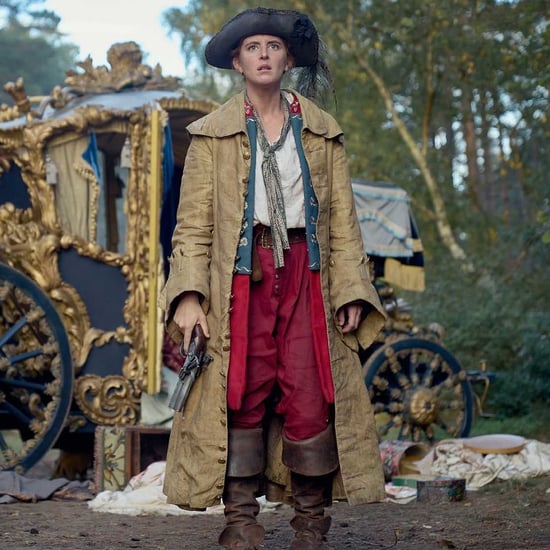What Is the Meaning of the Emerald Tablet in Netflix's Dark?
Sic Mundus Creatus Est: The Importance of the Mysterious Emerald Tablet in Netflix's Dark
Watch out! This post contains spoilers.

Netflix's German-language series Dark has transfixed (not to mention confused) audiences across the globe. The series initially took off thanks to its comparison to Stranger Things, what with its missing children, government conspiracies, and '80s flashbacks. But that's where the similarities between the shows stop. Dark is, well, much darker, and infinitely more complex and more cerebral, with a Greek tragedy-like drama that unfolds amongst its extensive ensemble that is only exacerbated by the constant looping of time . . . and the existence of parallel universes.
With a show like Dark, the smallest details make the difference for the entire trajectory of the narrative, making it easy for fans to develop theories on where this time-travelling saga is heading. One of those small, theory-instigating details from the show is something called the Emerald Tablet, an ancient, esoteric text that, honestly, if you hadn't done some googling about the show, you may not have even realised was a thing. In season two, Dark's various storylines and time periods begin to connect, and the Emerald Tablet has a lot to do with everything coming together. In season three, we eventually discover the Emerald Tablet has been hinting at the story's big reveal all along. But to fully understand the tablet's importance in the show, you must first know the details and symbolism behind the enigmatic artefact.
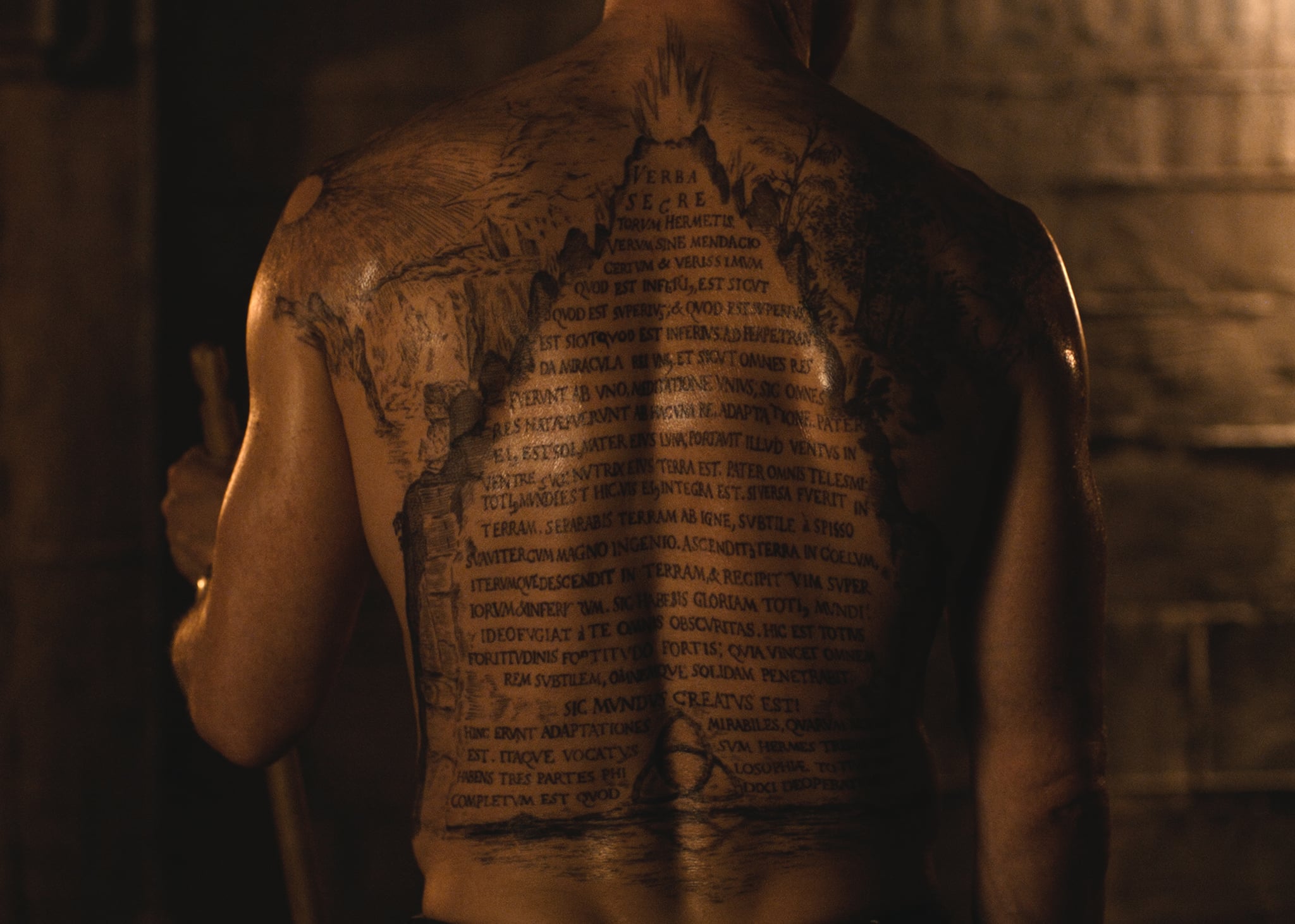
What Are the Origins of the Emerald Tablet?
The Emerald Tablet — also known as Tabula Smaragdina in Latin — is an ancient wisdom text that has long been linked to hermeticism, which is a religious, philosophical, and esoteric belief system established in the first three centuries CE. Hermeticism is convoluted and mysterious by definition, but to put it (kind of) simply: hermeticism believes that there are three parts of the wisdom of the universe: alchemy, astrology, and theurgy (a form of white magic that involves summoning a supernatural power for help, basically). It has long been believed that the Emerald Tablet was part of a greater collection of works known as the Hermetica, written around the second and third centuries CE by an ancient philosopher named Hermes Trismegistus, although that notion has since been debated.
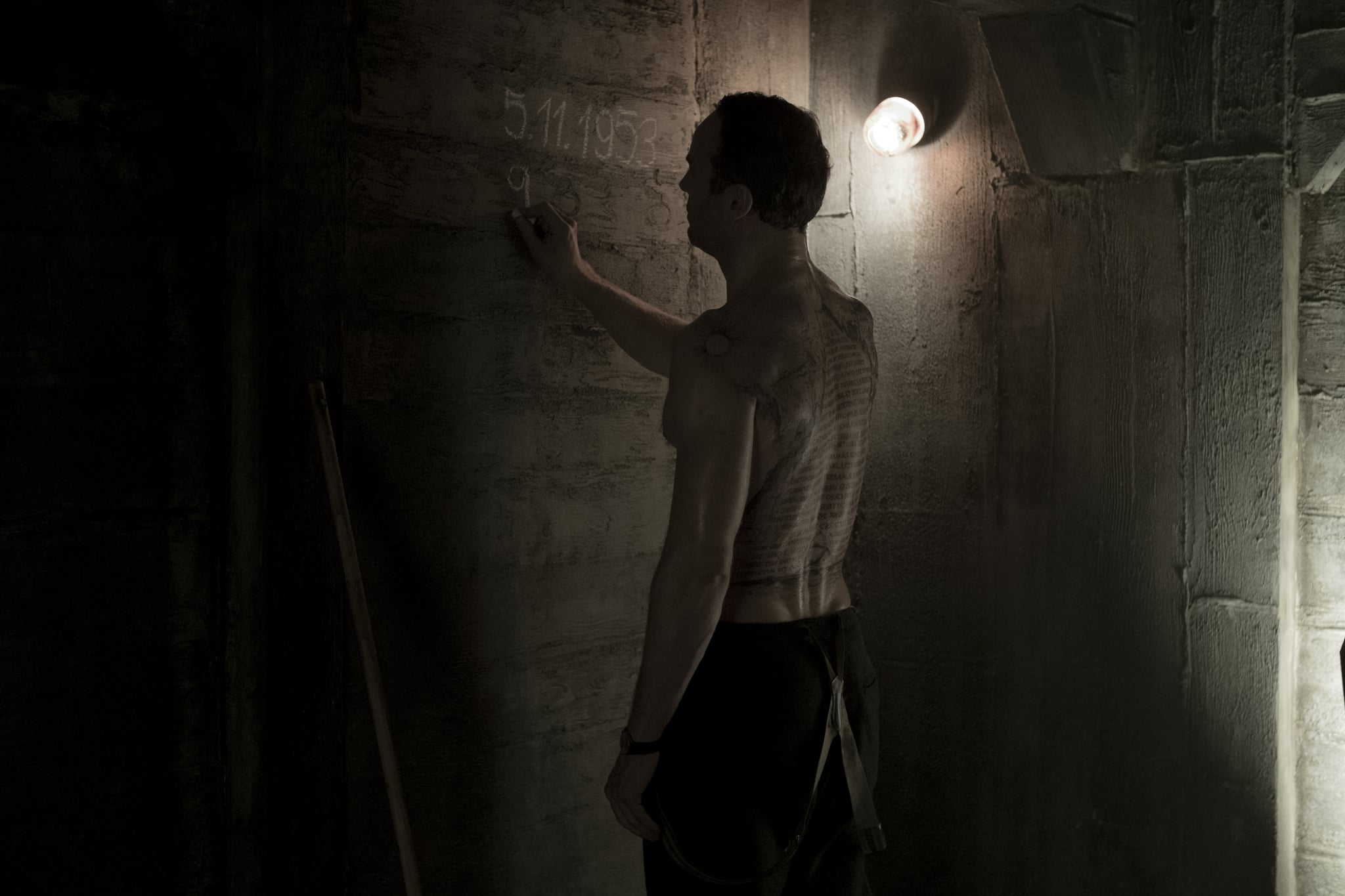
What's on the Emerald Tablet?
Whatever the origins, here's what's important in reference to Dark: first, the Emerald Tablet was believed to reveal the secrets of alchemy and hold the answers to the essence of all matter, or prima materia, making it the foundation for the work of medieval alchemists (people who create or transform elements). This seems to hint at the existence of the "God particle" in the show, the throbbing black blob in the Winden Nuclear Power Plant that allows the characters to create a portal through which time travel can occur to any desired date. For a majority of the series, Jonas believes the God particle is the key to stopping the time loop and saving his loved ones.
Audiences first caught on to the esoteric text reference when Jonas happens upon the Latin phrase sic mundus creatus est — a well-known line from the tablet that means "thus, the world was created" — etched into the metal doors in the cave used to travel between time periods. ("Sic Mundus" also becomes the name of Adam's secret society of "travellers".) The tablet is also the origin of the well-known saying "as above, so below" (the actual line being "and that which is above is like that which is below"), which, when you think about it, has interesting implications when applied to the narrative's closed time loop.
Lastly, and probably the most importantly, is the "triquetra" symbol, or trinity knot, that is sandwiched amongst the text on the tablet and can be seen both as a visual representation of the time loops and how everything is connected (more on that later).
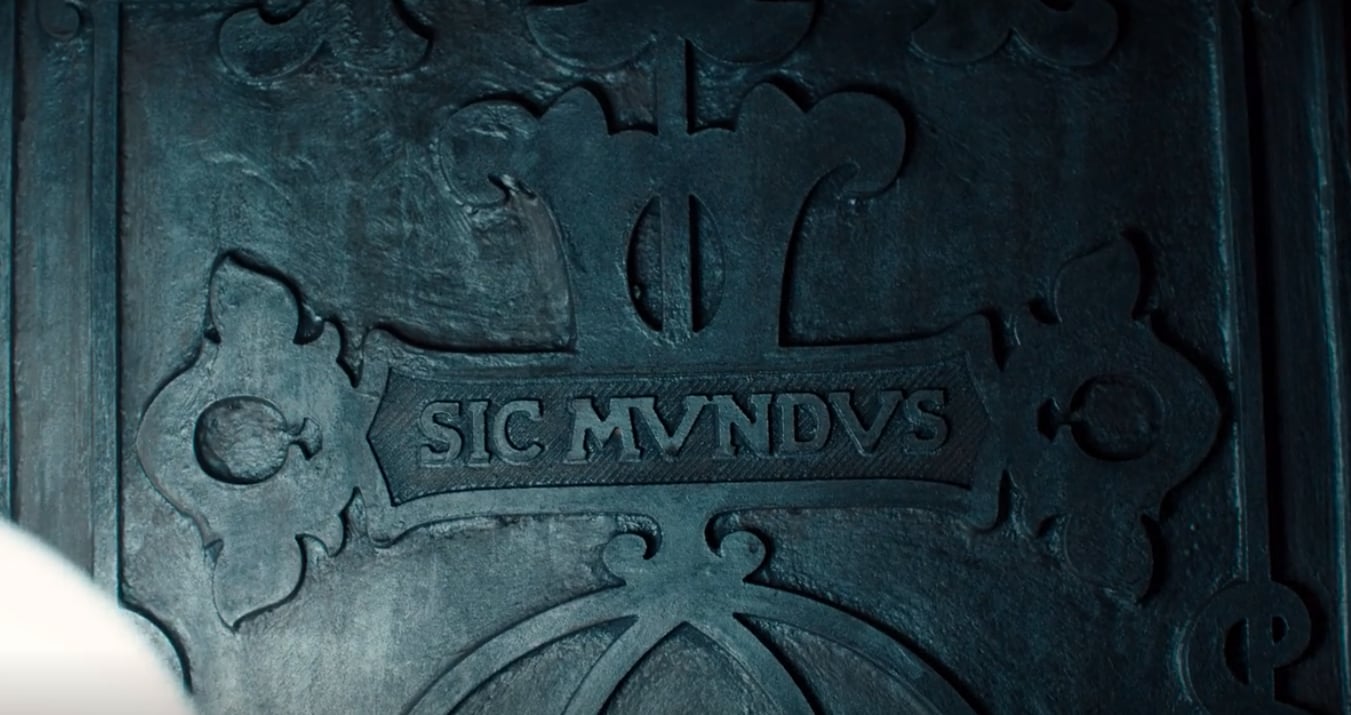
When Do We See the Emerald Tablet on Dark?
While we first glimpse the phrase sic mundus creatus est in episode one, season six when Jonas enters the cave, the tablet's full text actually appears several times throughout the first season — tattooed on the back of the enigmatic Noah, framed on the hospital wall in 1986 (spotted by Mikkel Nielsen after being catapulted back in time), and printed on an album that teenage Ulrich Nielsen plays in his bedroom, also in 1986. The album is titled Fist of Hebron by a band named Tabula Smaragdina.
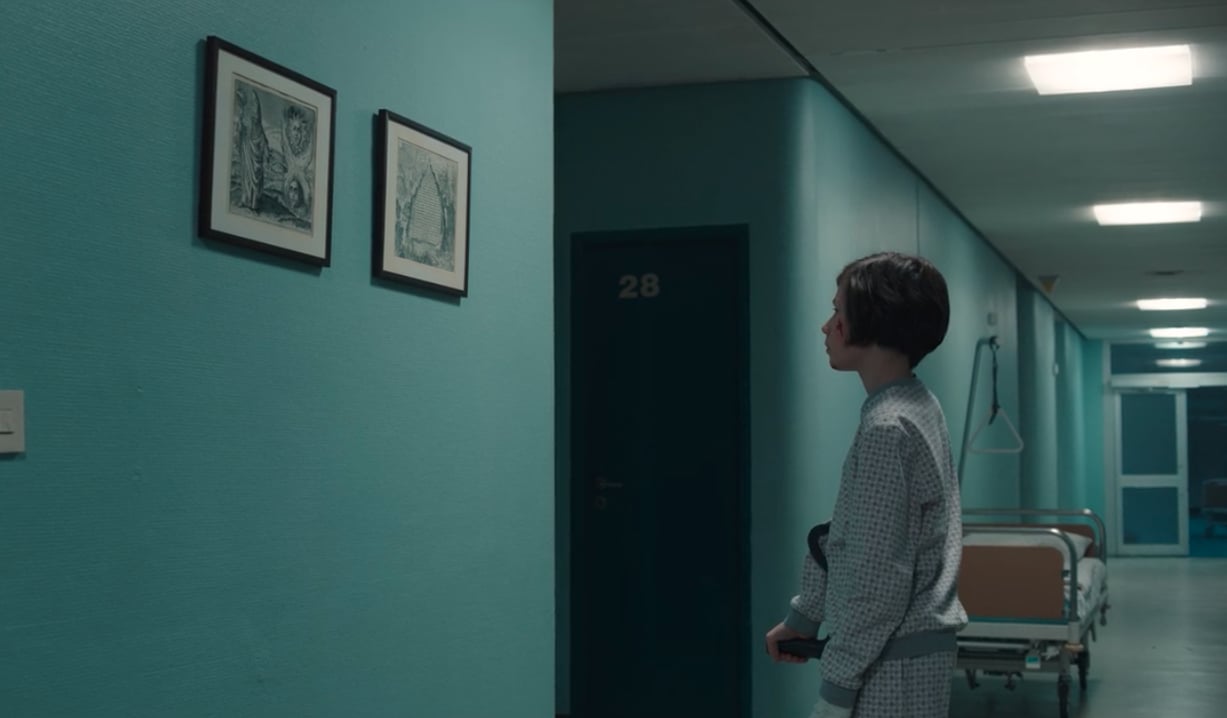
Season two opens with a reference to the Emerald Tablet, and it becomes clear that this detail is more than just a fan theory but an integral plot device. In the first five minutes, we see the same illustrated version of the text tattooed on the chest of a man drilling the Winden cave in 1921, revealed in season three to be Bartosz, who has travelled back in time and is part of Adam's "Sic Mundus" group (and who has also fathered Noah (aka Hanno Tauber) in the process). In the same episode — 132 years later in 2053 — an older Elisabeth Doppler signs the phrase "sic mundus creatus est" to a ragged-looking mob — including a teenage Jonas, who is trying to get back to 2019 (Elisabeth is also part of Adam's crew). In episode four of the second season, Jonas finds himself in 1921, recovering from the injuries he incurs in 2053 when he himself is almost hanged. While mending those wounds at an inn of some sort, Jonas encounters a young Noah. Upon readying to leave his room, the tablet text is seen in a picture that is framed on Noah's bedroom wall, where Jonas has been the entire time.

By the end of season two, we not only discover that Adam is referred to as the "Sic Mundus" by a young Noah (season two, episode four), but we also learn the mind-bending fact that Adam is actually a much older Jonas whose face has been disfigured from constant time travelling. In season three, we find out that Adam isn't just attempting to stop the time loop in Winden but rather destroy his world and a second world, a parallel universe in which a similar similar time loop and series of events is occurring, although with Martha leading the charge instead of Jonas. And just like Adam is a much older, time-ravaged version of Jonas, a new character, Eva, is a much older, time-ravaged version of Martha, who is attempting to save both worlds and keep the loop going.
In season two, Dark's various storylines and time periods begin to connect, and the Emerald Tablet has a lot to do with everything coming together.
How Does the Emerald Tablet Come Into Play on Dark?
So much of Dark's storylines are entrenched in the causation of past, present, and future and how the three intertwine into a knot. This idea is also connected to, you guessed it, the Emerald Tablet. A trinity knot — or the "triquetra," according to Netflix's website — is a knot "that has no beginning and no end, everything is connected." It is found on Celtic ornaments, Germanic rune stones, Japanese illustrations, and Christian imagery. On the show, it is seen on the cave's metal door, decorating Noah's leather notebook, and sandwiched in between the illustrated text of the Emerald Tablet. "Similar to the Triquetra," the Netflix website states, "the passage in the caves creates a closed time loop between the years 1953, 1986, and 2019, ensuring the past affects the future and the future influences the past." It isn't until the series finale where we find out just how important the triquetra actually is to the overall storyline.
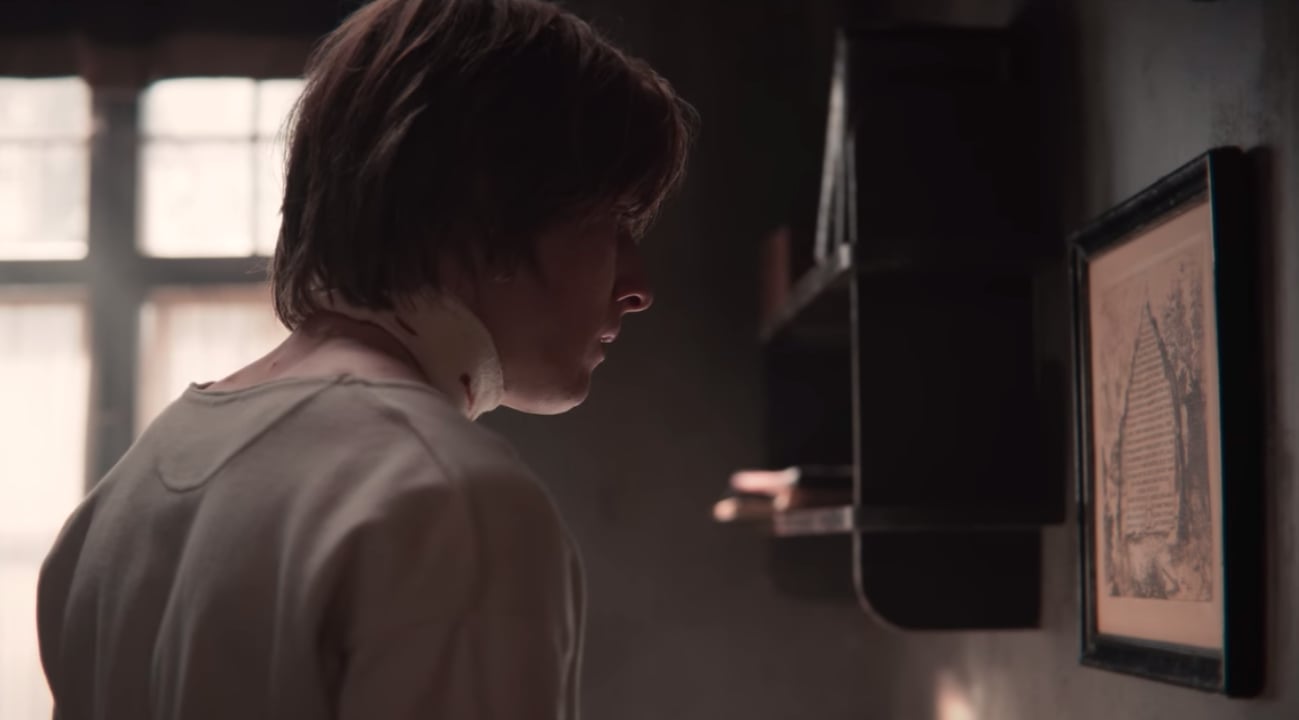
In the last episode of season three, Claudia reveals to Adam the reason he hasn't been successful at stopping the time loops. "You want to destroy the knot, but every action you take continues its existence," she tells him. "Your world and Eva's world, they both should have never had existed. You thought that the origin lies in the binding of both worlds but in reality is outside of both worlds. Our thinking is shaped by dualities — black, white, light and shadow, your world and Eva's world — but this is false. You need a third dimension to fulfill it all."
Claudia goes on to reveal that there are actually three worlds — that in addition to Adam's and Eva's worlds, there is the origin world, the one in which clockmaker H.G. Tannhaus's experiments with time travel and accidentally create the two parallel universes (literally "sic mundus creatus est/ "thus, the world was created"). "The world that gave birth to this knot, where everything originates, where a single mistake was made," Claudia continues, explaining to Adam how he can finally stop the time loops and put an end to his and Martha's suffering. "Tannhaus in the origin world, like you, he lost someone. And like you, he tried to bring that person back from the dead. But instead, he divided and destroyed his world and created our two worlds. But there is a way to destroy the knot — through preventing in the origin world the invention of travel through space and time in the first place," she adds.
It's at this point where the triquetra depicted in the Emerald Tablet finally makes sense and at least one aspect of the tablet's symbolism is revealed (because this is Dark by the way, and everything is more complex and complicated than it seems). While it's never explicitly explained, the trinity knot most likely symbolises the three interconnected worlds that are bound together on a never-ending, interconnected loop. "Everything is connected" and "the beginning is the end, and the end is the beginning," are two phrases that weave their way through the entire season, and the triquetra on the Emerald Tablet is a visual representation of that. It alluded to how the story started and gave us a clue as to how it must end for Jonas and Martha, and it was right in front of our faces all along.
